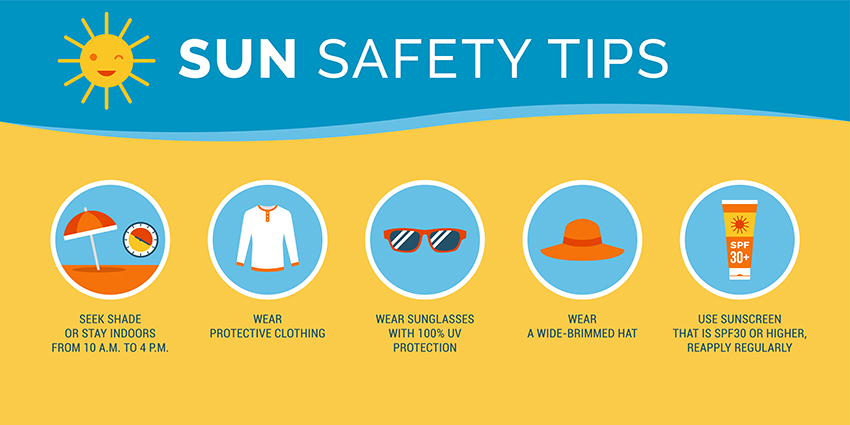Protecting Yourself in the Sun
Spending time outside is a great way to be physically active, reduce stress, and get vitamin D. However, sunlight contains ultraviolet (UV) radiation, which causes premature aging of the skin, wrinkles, cataracts, and skin cancer. The amount of damage from UV exposure depends on the strength of the light, the length of exposure, and whether the skin is protected. There are no safe UV rays or safe suntans.
Sun exposure at any age can cause skin cancer. Be especially careful in the sun if you burn easily, spend a lot of time outdoors, or work outdoors. Here are some tips on how to protect your skin from the sun:
- Stay in the shade
- When possible, wear long-sleeved shirts and long pants or skirts
- For the most protection, wear a hat that has a brim all the way around that shades your face, ears, and back of your neck
- Wear sunglasses — options that block both UVA and UVB rays offer the best protection
- Put on broad spectrum sunscreen that filters out both UVA and UVB rays and has an SPF of 15 or higher before you go outside — and make sure you reapply every two hours
We also want to further highlight how important it is for people who work outside to stay safe from the sun. Skin cancer can greatly reduce workers’ productivity. Every year, Americans lose more than $100 million in productivity because of restricted activity or absence from work due to skin cancer. Below are tips to increase sun protection for employees working outdoors:
- Encourage sun safety among your employees and provide sun protection when possible
- Use tents, shelters, and cooling stations to provide shade at worksites
- Schedule breaks in the shade and allow workers to reapply sunscreen throughout their shifts
- Create work schedules that minimize sun exposure. For example, schedule outdoor tasks like mowing for early morning instead of noon, and rotate workers to reduce UV exposure
It’s important to examine your body monthly because skin cancers detected early can almost always be cured. The most important warning sign is a spot on the skin that is changing in size, shape, or color during a period of one month to one to two years. If you find unusual skin changes, see a health care professional immediately.
For more information on sun safety, visit: https://www.cdc.gov/cancer/skin/basic_info/sun-safety.htm
Credit: OSHA and CDC
Learn more about HazTek Safety & OSHA Training.
